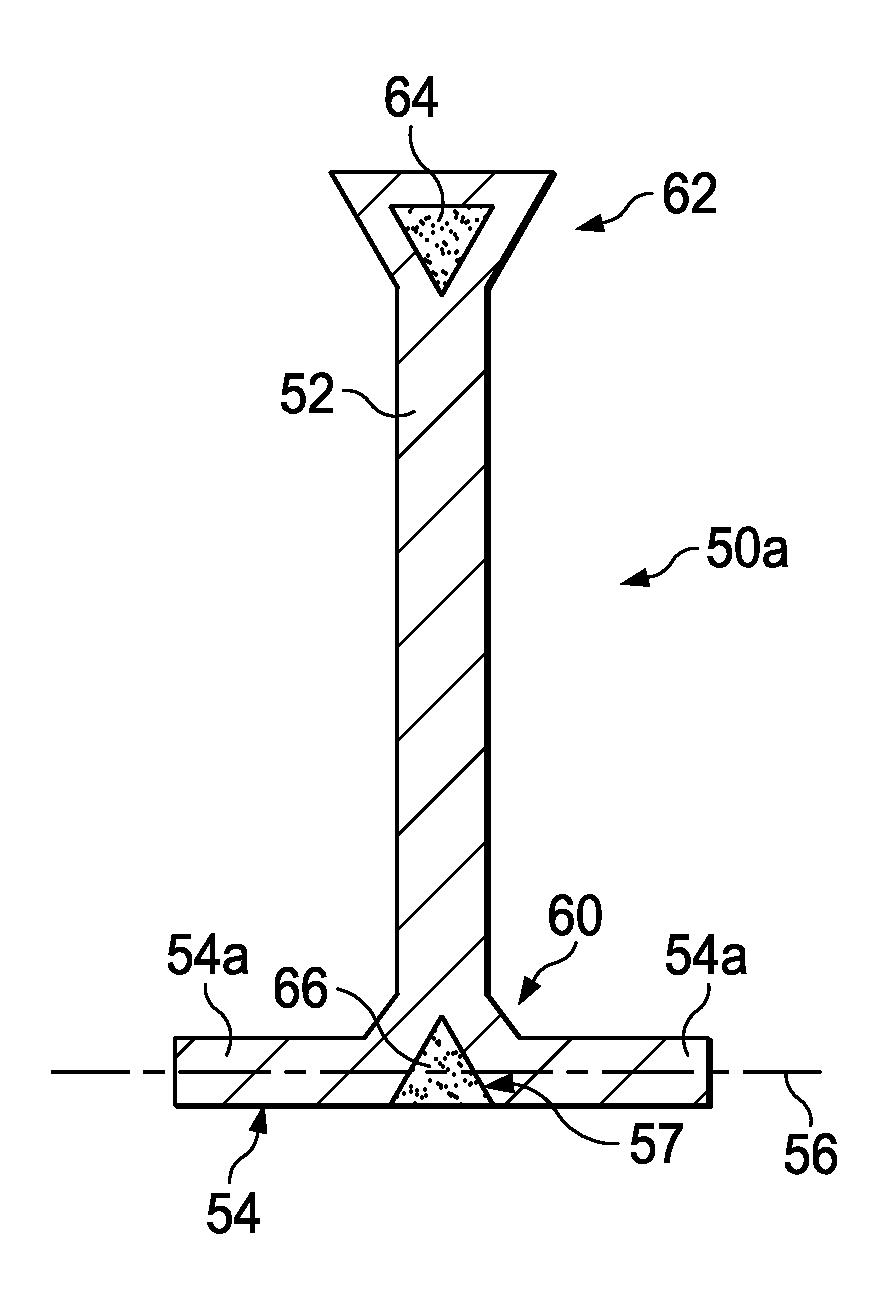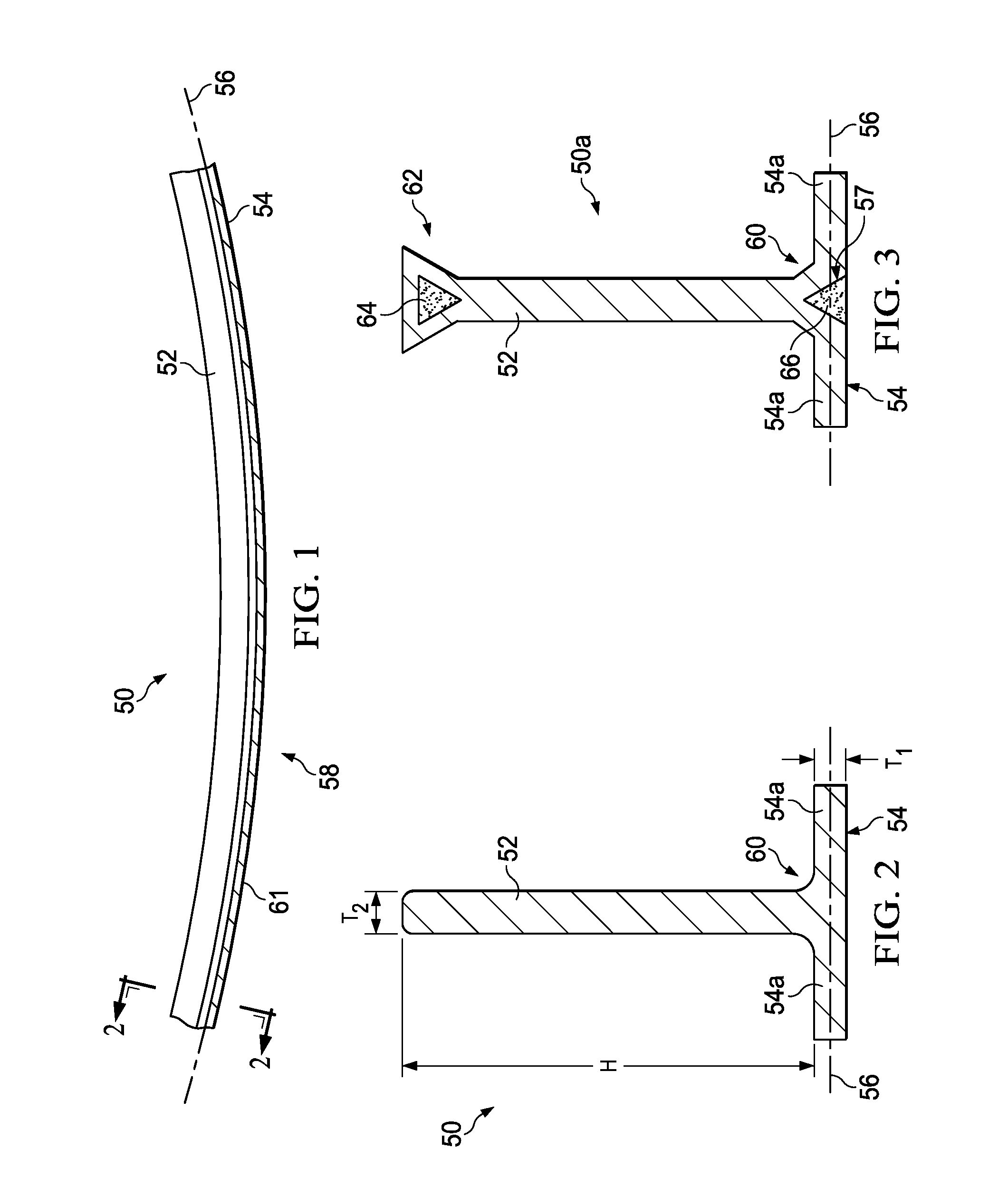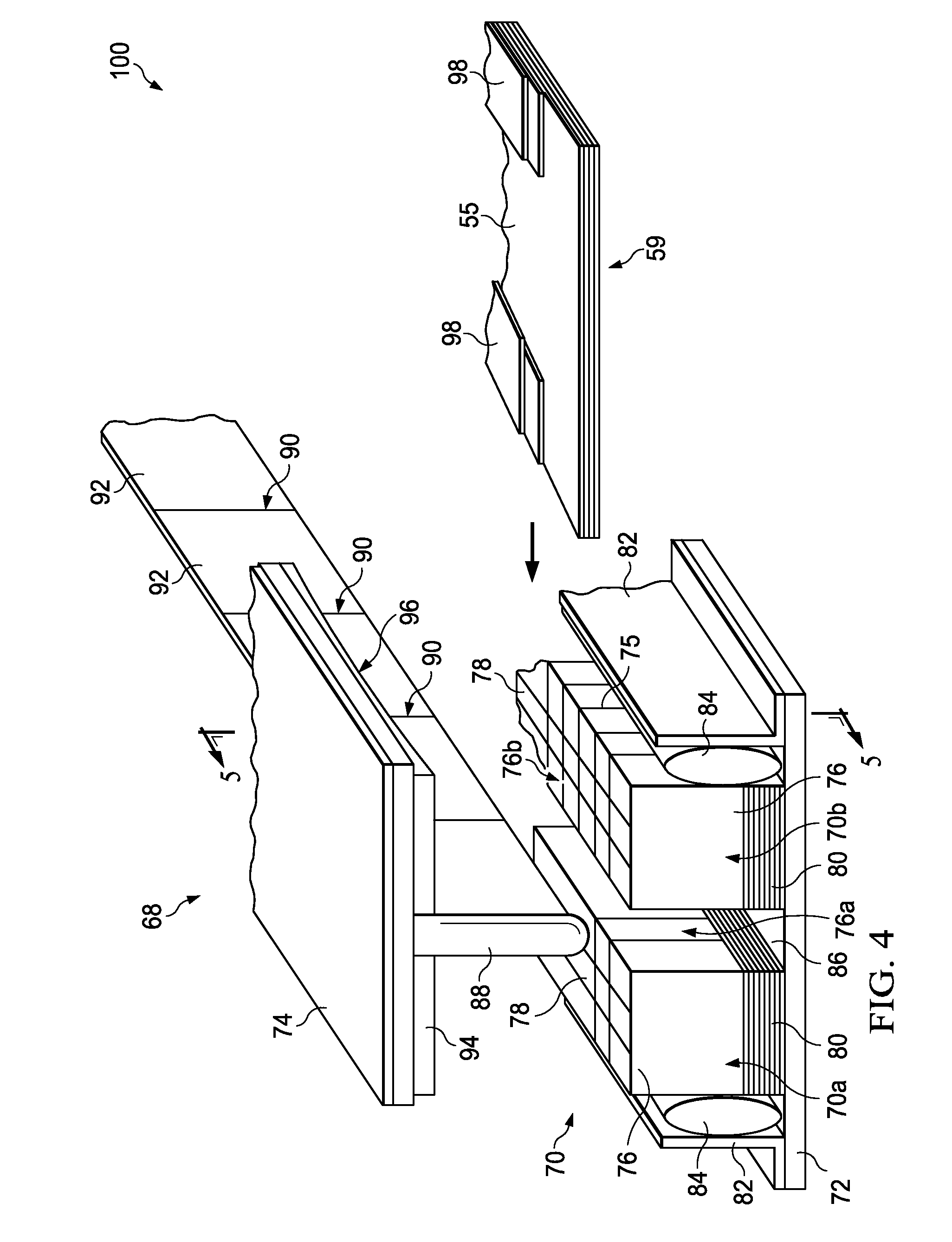Method and Apparatus for Fabricating Composite Stringers
a stringer and composite technology, applied in the field of composite structure fabrication, can solve the problems of increased manufacturing flow time, difficulty, and labor intensiveness, and achieve the effect of reducing tooling costs and process flow times
- Summary
- Abstract
- Description
- Claims
- Application Information
AI Technical Summary
Benefits of technology
Problems solved by technology
Method used
Image
Examples
Embodiment Construction
[0048]Referring first to FIGS. 1 and 2, the disclosed embodiments relate to a method and apparatus for fabricating an elongate, composite stiffener, such as a blade type stringer 50 having a substantially flat blade 52 and a flange 54 extending substantially perpendicular to the blade 52. The flange 54 includes a pair of flange portions 54a laterally extending from one end of the blade 52, and connected to the blade 52 by a radius section 60. The blade stringer 50 may have one or more contours 58 along its length. In the illustrated embodiment, the stringer 50 has a substantially constant contour 58 in the curved plane 56 of a flange 54. In other embodiments, the stringer 50 may have one or more of the contours 58 which may or may not be of constant curvature. Also, as will be discussed later in more detail, the flange 54 may have a variable gauge or thickness T1 at one or more locations along its length in order to conform the stringer 50 to localized contours of a structure to whi...
PUM
| Property | Measurement | Unit |
|---|---|---|
| pressure | aaaaa | aaaaa |
| lateral pressure | aaaaa | aaaaa |
| temperature | aaaaa | aaaaa |
Abstract
Description
Claims
Application Information
 Login to View More
Login to View More - R&D
- Intellectual Property
- Life Sciences
- Materials
- Tech Scout
- Unparalleled Data Quality
- Higher Quality Content
- 60% Fewer Hallucinations
Browse by: Latest US Patents, China's latest patents, Technical Efficacy Thesaurus, Application Domain, Technology Topic, Popular Technical Reports.
© 2025 PatSnap. All rights reserved.Legal|Privacy policy|Modern Slavery Act Transparency Statement|Sitemap|About US| Contact US: help@patsnap.com



